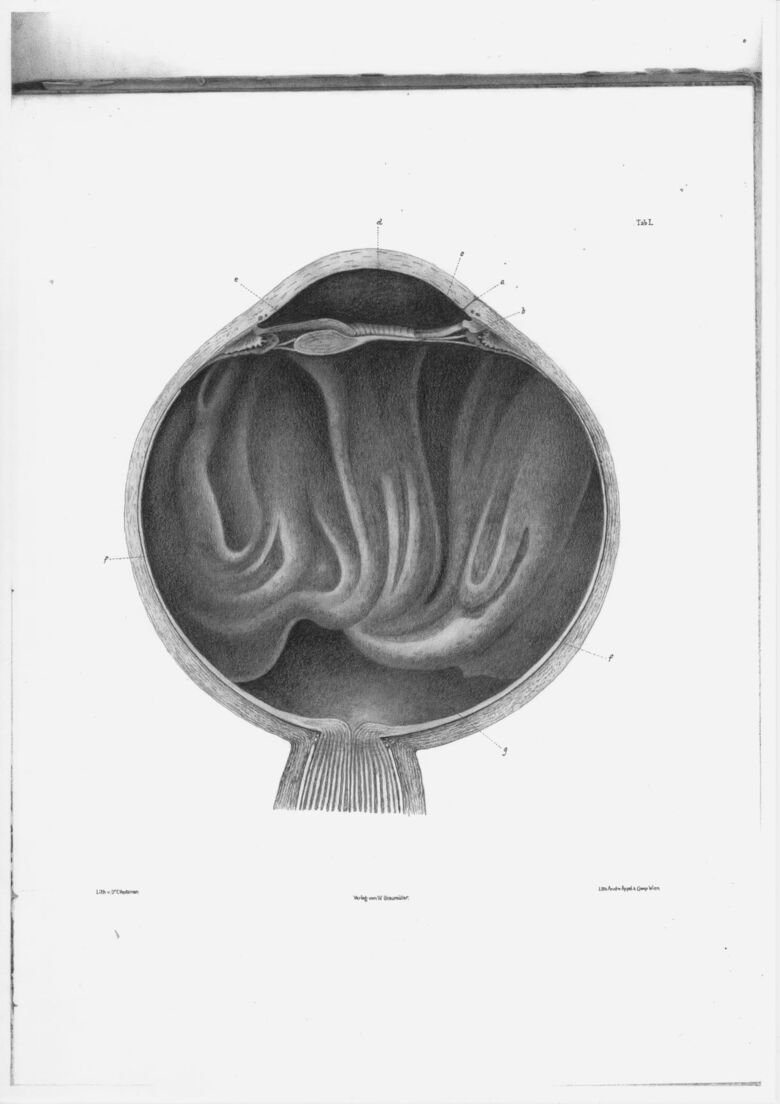Vitreous Bodies. New Exhibition at The Hagströmer Library.
Vitreous Bodies. Exhibition at The Hagströmer Library, 31 May – 30 September 2022.
Vitreous bodies is an ongoing project by the artist Jenny Åkerlund, which revolves around the anatomy of the eye and the development of optics, with an emphasis on visual noise and entoptic phenomena.

In the exhibition at Hagströmer Medico-Historical Library a selection of glass objects and drawings are presented, which in various ways relates to, or take their starting point in, the library’s vast collection of ophthalmological image material. During the period 2018-2021 Åkerlund has used works in the collection as points of departure to create drawn reproductions of the material, these drawings are now presented in the exhibition, together with a selection of the original publications.
Åkerlund’s practice revolves around aspects of time and transformation in relation to visual culture. Through the use of disciplines like history of science and astronomy, and with techniques spanning drawing, glass and video, she investigates the impermanent character of the visible in different ways.
Jenny Åkerlund (b. 1984) holds an MFA from Malmö Art Academy. Her work has, among other places, been exhibited at Kunsthal Charlottenborg, Copenhagen, Goya Curtain, Tokyo, Galerie Thaddaeus Ropac, Pantin, Galleri Tom Christoffersen, Copenhagen, Galerie Jeanroch Dard, Paris and Museum of Contemporary Photography, Chicago.

The exhibition also shows a rich selection of works from the Hagströmer Library's own collection of books on ophthalmology and related subjects.
Among other things, Georg Bartisch's Ophthalmodouleia from the year 1583 is presented, which is illustrated with hand-coloured woodcuts which depict various treatment methods for curing eye diseases. Other works consist of some of the 17th and 18th century's most fascinating microscopy books, including Robert Hooke´s influential Micrographia from 1665 and Antonie van Leeuwenhoek's Epistolae ad societatum regiam anglicam from 1719.
Some of the most magnificent ophthalmological atlases of the 19th century are also on display, including Hermann von Helmholtz's Beschreibung eines Augen-Spiegels zur Untersuchung der Netzhaut im lebenden Auge from 1851, whose images are produced using an ophthalmoscope, Helmholtz's groundbreaking invention from the same year. With the ophthalmoscope, he was able to study the anatomy of the eye on living patients for the first time. Among the more modern works in the exhibition are some writings by Allvar Gullstrand, who in 1911 became Sweden's first Nobel laureate in physiology or medicine.
The exhibition also shows a number of borrowed objects from the Museum of Medical History in Uppsala and the Museum of Medical History in Stockholm, including unique wax models made at La Specola in Florence and donated to KI in 1825.
Curator: Anna Lantz, Hagströmer Library, Karolinska Institutet
